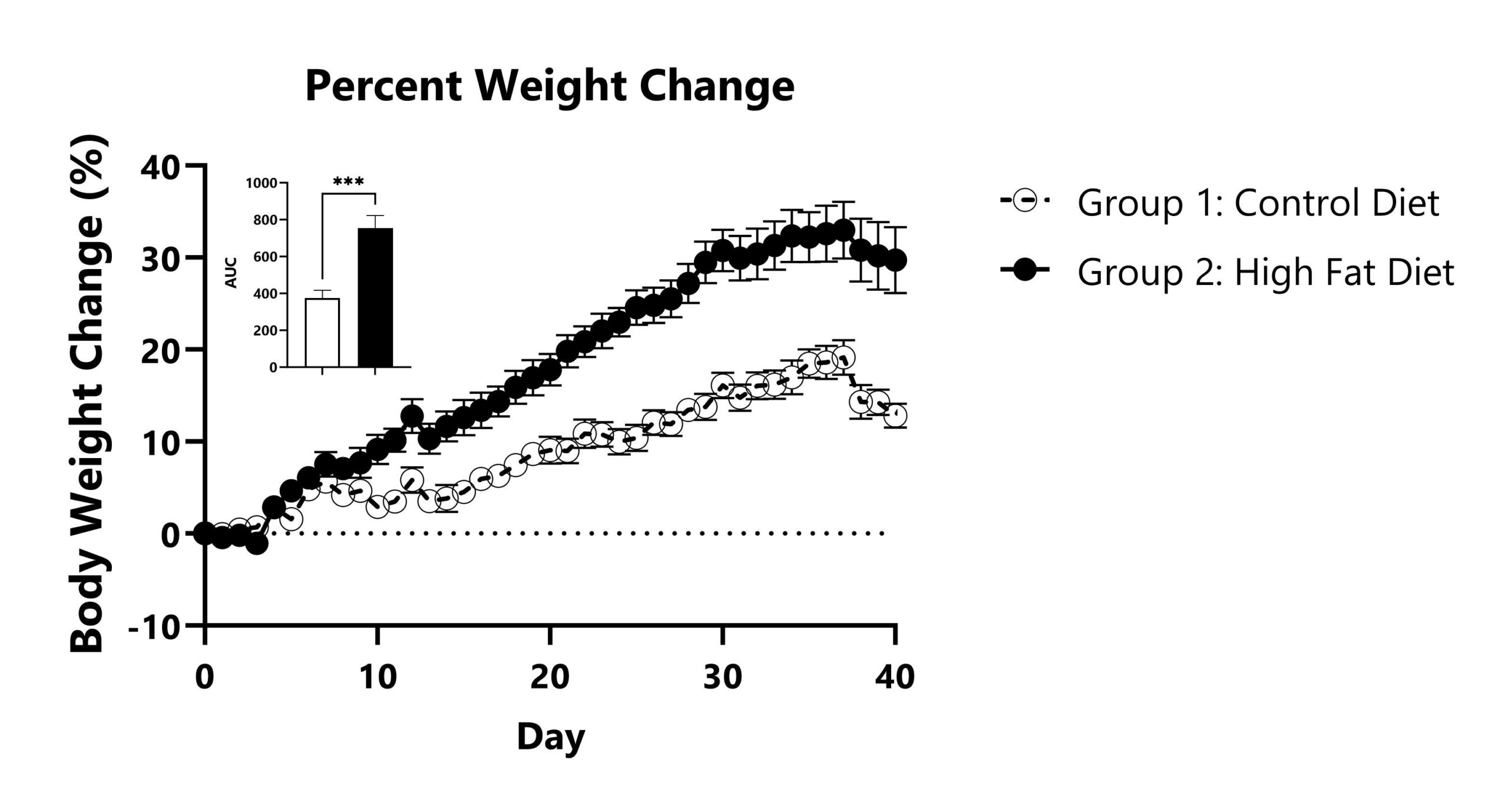- Research Services
- Capabilities
- About Us
- Resources
- Contact Us
 Obesity
Obesity Diabetes and Diabetic Wound Healing
Diabetes and Diabetic Wound Healing Metabolic Disease
Metabolic DiseaseBioModels has extensive experience with a variety of animal models that capture critical mechanisms of metabolic disease.
Assess your experimental materials for efficacy and mechanism of action in BioModels’ obesity models. Obesity is a disease characterized by having too much body fat and is a medical problem that can lead to heart disease, diabetes, high blood pressure, as well as a number of other pathologies. BioModels’ obesity models capture a spectrum of disease mechanisms, allowing you to select the model most relevant for your hypothesis. The BioModels team is experienced with numerous preclinical obesity models, including genetic and diet- induced models.
Experimental endpoints for these models include:
Assess your experimental materials for efficacy and mechanism of action in BioModels’ established diabetes and diabetic wound healing models. Diabetes mellitus defines a group of metabolic disorders characterized by chronic hyperglycemia due to impaired insulin secretion systems or dysregulated insulin sensitivity in an individual. The global prevalence of diabetes and diabetes-related complications has increased exponentially over the past several decades, creating a clear need for the development of novel therapeutics in this space.
BioModels has experience with a variety of in vivo models to simulate Type I and Type II diabetes as well as the diabetic wound healing process that can be used to validate compounds in a pre-clinical setting with customizable, experimental endpoints such as:
Study Models

Certain strains of rats and mice are genetically predisposed to obesity and can be used to identify specific mechanistic factors that are contributing to obesity and to assess novel therapeutics for their potential in treating this metabolic disorder. BioModels can provide the expertise necessary to design and execute an obesity model that is customized to meet your specific needs with flexible experimental endpoints.

Close

Macronutrients of rodent chow can be manipulated to introduce specific levels of dietary fat. Rodents placed on a diet that provides at least 30% of total daily energy intake from fat provide a translational model of obesity. These models can be used to identify specific mechanistic factors that are contributing to diet-induced obesity and to assess novel therapeutics for their potential in treating this metabolic disorder. BioModels can provide the expertise necessary to design and execute a diet induced obesity model that is customized to meet your specific needs with flexible experimental endpoints. Sample data compares C57Bl/6 mice placed on a high fat diet for 40 days to animals fed a control diet.

Animals maintained on a control or high-fat diet are weight daily, and percent weight change as compared to Day 0 is calculated. The AUC is calculated to compare treatment arms and is shown in the inset. (***p<0.001).

Animals maintained on a control or high-fat diet underwent a dual-energy X-ray absorptiometry (DEXA) scan to assess bone density, bone mineral content, and bone area. (**p<0.01).

Animals maintained on a control or high-fat diet underwent a dual-energy X-ray absorptiometry (DEXA) scan to assess lean tissue mass, fat tissue mass, and percent body fat. (***p<0.001; ****p<0.0001).

Close
Study Models

The Streptozotocin diabetes model is a well published diabetes model in the field that is frequently used in drug development. Streptozotocin is an antibiotic derived from Streptomyces achromogenes that preferentially targets and destroys insulin-secreting pancreatic β cells and can be used to induce a hyperglycemic state in rodents. These models are characterized by altered blood glucose and insulin levels and can be used to assess disease pathology or to screen potential therapeutic compounds. Representative data depicts various Streptozotocin-induced Type I diabetes phenotypes.

Streptozotocin-induced animals are weighed daily, and percent body weight change relative to Day 0 is calculated. The AUC is calculated to compare groups and is shown in the inset. (****p<0.0001).

Blood glucose levels are monitored using a blood glucose reader. The AUC is calculated to compare groups and is shown in the inset. (*p<0.05; ****p<0.0001).

Day 14 Blood glucose and blood insulin levels were measured via glucose monitor and ELISA, respectively. (****p<0.0001).

Close

There are several well characterized, genetic rodent models of spontaneous Type I and Type II diabetes including the Zucker fatty rat (Type I), the ZDF rat (Type II), the ob/ob mouse (Type II), and the db/db mouse (Type II) that recapitulate autoimmune aspects of the human disease. BioModels has the expertise and experience to help you select the model that will be most appropriate for your goals of testing novel therapeutics, assessing specific mechanisms of the metabolic disorder, or addressing certain medical complications that arise in diabetic patients.

Close

Feeding mice an Amylin liver NASH (AMLN) diet leads to obesity, fatty liver, and after longer amounts of time both liver inflammation and fibrosis and has become a widely used model for nonalcoholic steatohepatitis (NASH). NASH is a severe form of nonalcoholic fatty liver disease (NAFLD), a condition in which the liver builds up excessive fat deposits which can progress to fibrosis, cirrhosis, and hepatocellular carcinoma.

Close



